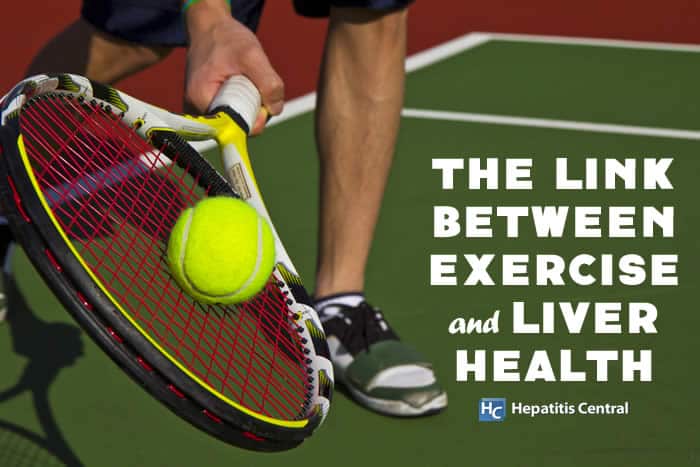The Link Between Exercise and Liver Health


Many of us hit the gym or get in daily movement because we’re aware that it can benefit our health. Heart health is one of the common improvements we hear when it comes to exercise, but it goes way beyond that. Our liver is an overlooked organ that exercise can also aid!
Here’s what recent research is saying about the relationship between physical activity and a healthy liver.
What’s the Link Between Exercise and Liver Health?
According to recent research published in JHEP Reports (1), exercise has the potential to reduce liver steatosis and stiffness in those who have non-alcoholic fatty liver disease (NAFLD).
“We compared data from obese Japanese men with NAFLD on a 3-month exercise regimen with those on dietary restriction targeting weight loss,” comments senior author Professor Junichi Shoda in an interview (2). “We tracked hepatic parameters, reduction in adipose tissue, increase in muscle strength, reductions in inflammation and oxidative stress, changes in organokine concentrations, and expression of target genes of Nrf2, an oxidative stress sensor.”
When participants were tested on these parameters, researchers found that:
- Liver steatosis was reduced by 9.5%
- Liver stiffness decreased by 6.8%
- FibroScan-AST Score (measure of liver fibrosis) lowered by 16.4%
The results also indicated an increase in anti-inflammatory and anti-oxidative stress responses in those that exercised.
“Our research shows how exercise prevents liver steatosis and fibrosis in NAFLD and clarifies that this benefit is compounded by preservation of muscle mass and is independent of weight changes. Patients on exercise regimens may become demotivated and drop out if they do not experience significant weight loss,” comments Shoda in the same interview (2). “Therefore, moderate to vigorous intensity exercise should be integrated in all NAFLD therapeutic regimens, and patients at risk for NASH should be encouraged to persevere with moderate to high intensity exercise regardless of whether or not they lose weight.”
Instead of focusing on the scale, keep your motivation up by noticing your non-scale victories.
This could include:
- Better fitting clothes
- Improved energy levels
- Better sleep
- Less pain
- Improved mood and brain function
Hepatitis C May Also Be Improved with Exercise
With over 2 million people living with hepatitis C (and 51% not even aware they have the virus), the risk of progressing to life threatening liver disease and cancer looms over. (3) Could exercise be the treatment and preventative of hepatitis C (HCV) that we need?
A 2018 mini review published in the Journal of Gastroenterology and Hepatology Research (4) determined that physical activity may benefit and control the pathophysiological processes of hepatitis C. It is mentioned, however, that additional research needs to be conducted because it is lacking.
Majority of research has linked exercise with improved quality of life and side effect improvement of HCV instead of actual improvements of the virus. A recent 2021 study published in BMJ Open Gastroenterology (5) found that individuals with HCV who were regularly active had improved quality of life scores compared to those who were not active – especially when it came to psychological outlook and social interaction.
When it comes to HCV, cognitive impairment can affect up to 50% of those who are infected. Another 2021 study (6) wanted to investigate if 12 weeks of aerobic exercise could benefit cognition.
The 31 participants in the exercise group had:
- 31% improvement in Trial Making Test A (connecting numbers in ascending order)
- 15% improvement in Trial Making Test B (connecting both numbers and letters in ascending order)
- 14% improvement in Montreal Cognitive Assessment (a 30-point test that includes several cognitive domains)
- Improvement in depression, fatigue, and cardiorespiratory fitness
Always Talk with Your Doctor First
Before you hop on the treadmill, sit down and have a discussion with your doctor first. They will be able to determine if the exercise routine you have in mind will be beneficial for you. It’s possible that exercise could be more harmful than helpful in those that have advanced liver disease.
For those that have mild or moderate liver function, still chat with your doctor, but your exercise recommendation is the same as the general population. The CDC (7) recommends getting in at least 150 minutes of moderate-intense physical activity each week or 75 minutes of vigorous-intense exercise.
Some examples of moderate-intense exercise include:

- Fast walking
- Water aerobics
- Riding a bike on level ground with minimal hills
- Playing doubles tennis
- Pushing a lawn mower
Some cues to know if you’re doing a moderate-intense activity is breathing harder, but still being able to talk.
Vigorous-intense activity only requires half the time as moderate-intense, but it also gets your heart rate up and you will have a hard time talking without needing to pause and take a breath.
Examples include:

- Jogging or running
- Swimming laps
- Riding a bike fast or on many hills
- Playing singles tennis
- Playing basketball
Along with these aerobic (cardio) activities, it’s also recommended to get in 2 days a week of muscle-building activities that work all major muscle groups including legs, hips, back, abdomen, chest, shoulders, and arms.
Conclusion
A life full of movement and physical activity can benefit our health in many ways, including our liver health. If you’re able, aim to meet the CDC recommendations for physical activity which is 150 minutes per week. If that is too difficult, start slow and work your way up to that time. Any sort of movement is better than none!
- Oh, S., Tsujimoto, T., Kim, B., Uchida, F., Suzuki, H., Iizumi, S., Isobe, T., Sakae, T., Tanaka, K., & Shoda, J. (2021). Weight-loss-independent benefits of exercise on liver steatosis and stiffness in Japanese men with NAFLD.JHEP Reports, 3(3), 100253. https://doi.org/10.1016/j.jhepr.2021.100253
- (2021, April 12).Exercise promotes healthy living and a healthy liver. ScienceDaily. https://www.sciencedaily.com/releases/2021/04/210412101923.htm.
- Secretary, H. H. S. O. of the, & Office of Infectious Disease and HIV/AIDS Policy (OIDP). (2016, June 7).Data and Trends. HHS.gov. https://www.hhs.gov/hepatitis/learn-about-viral-hepatitis/data-and-trends/index.html.
- Santos de Sousa Fernandes, M., Autran de Lima, E., Olegário da Silva, L., Laís Oliveira, T., Jurema Santos, G. C., da Costa Ribeiro, I., Rabelo Forte de Siqueira, É., Tenório Calazansde Lira, C., & de Lucena Simões e Silva, L. (2019). Can Physical Activity Help in Hepatitis C Treatment? A Mini Review.Journal of Gastroenterology and Hepatology Research, 8(1), 2789–2792. https://doi.org/10.17554/j.issn.2224-3992.2019.07.802
- Hallsworth, K., Gosrani, S., Hogg, S., Patel, P., Wetten, A., Welton, R., McPherson, S., & Campbell, M. D. (2021). Association of exercise participation levels with cardiometabolic health and quality of life in individuals with hepatitis C.BMJ Open Gastroenterology, 8(1). https://doi.org/10.1136/bmjgast-2020-000591
- O’Gorman, P., Strahan, O., Ferguson, D., Monaghan, A., Kennedy, M., Forde, C., Melo, A. M., Doherty, D. G., O’Brien, K. K., McKiernan, S., Kenny, R. A., Coen, R., Doherty, C., Bergin, C., Gormley, J., & Norris, S. (2021). Improvement in cognitive impairment following a 12‐week aerobic exercise intervention in individuals with non‐cirrhotic chronic hepatitis C.Journal of Viral Hepatitis, 28(4), 637–650. https://doi.org/10.1111/jvh.13460
- Centers for Disease Control and Prevention. (2020, October 7).How much physical activity do adults need? Centers for Disease Control and Prevention. https://www.cdc.gov/physicalactivity/basics/adults/index.htm.







